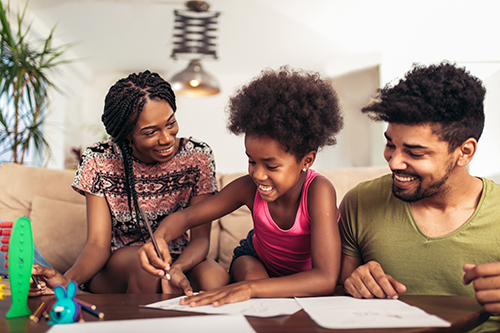Set family rules with your children for safety:
- Check first – Check with a parent or safe adult before making or changing plans, accepting gifts or helping an adult. Tell children that adults don’t ask children for help or directions, they ask other adults. If someone approaches a child, children will check with a Safe Adult first
- Take a friend – When going places or playing outside, take a friend or two for safety. Offenders are more likely to target a child who is alone.
- Tell people no – It’s OK to say no to people who make you feel unsafe, uncomfortable or confused, someone who hurts you or someone who asks you to break safety rules.
- Tell a Safe Adult – Help your children name at least five adults with whom they can talk when they feel unsafe, uncomfortable or confused, or if someone asks them to break a safety rule. Help your child tell each of the people they are the child’s Safe Adult.
- Safe locations – Teach your children what to do if they are walking to school or to a friend's house and they are being bothered or followed. Walk these common routes with your children and point out safe locations. A safe location can be a school, library, police station, store or neighbor's house, anywhere that they can find a responsible adult or lots of people.
- No “Stranger Danger” – Not all strangers mean danger. Most victimization occurs at the hands of someone a child knows, and children often must interact with people who are “strangers,” for example, new teacher, dentist or social worker. Focus on how the person makes the child feel rather than whether the child knows them.
